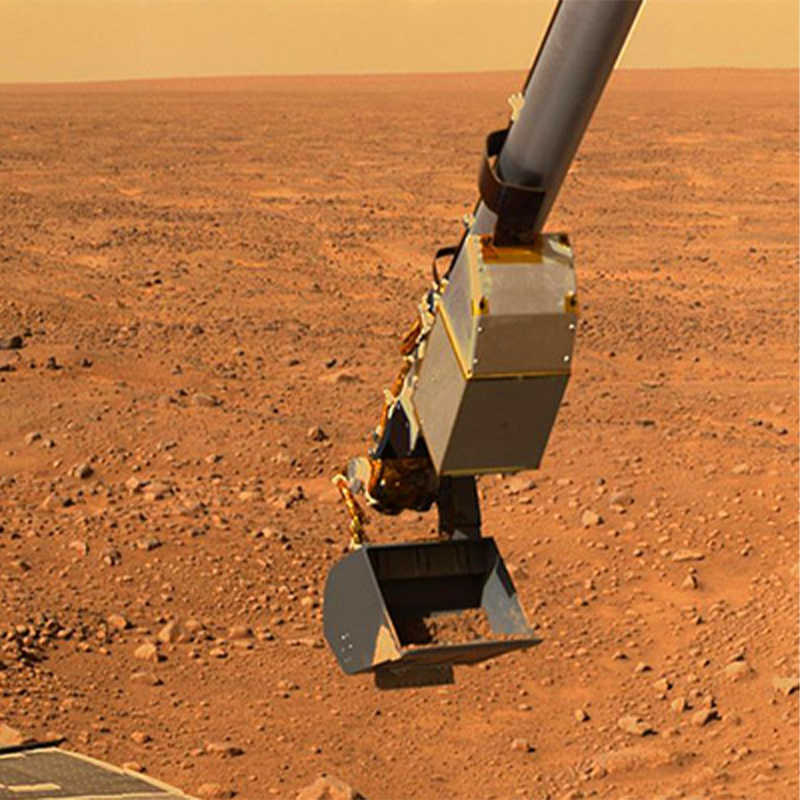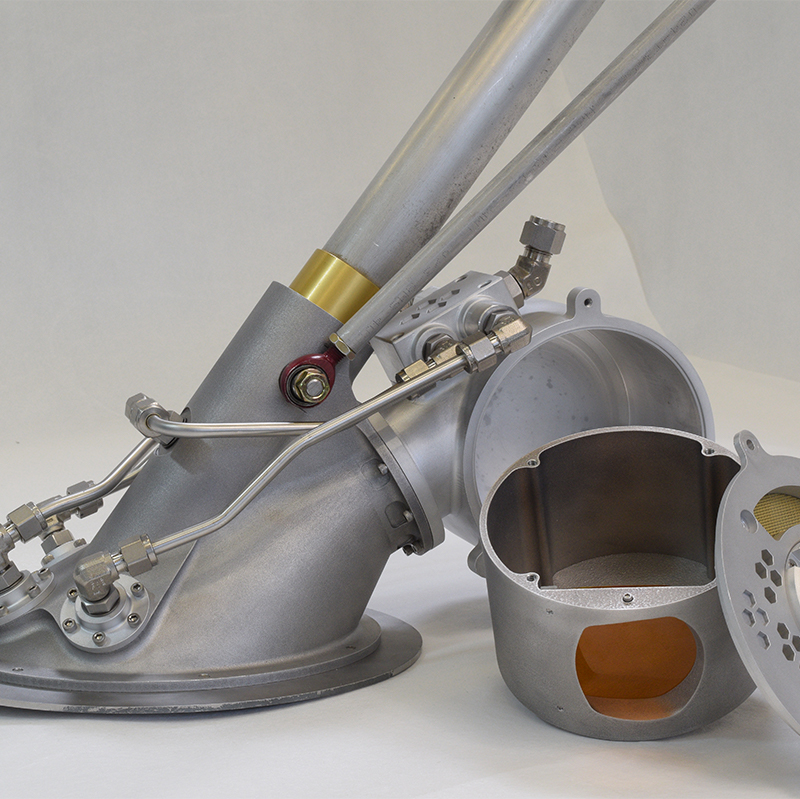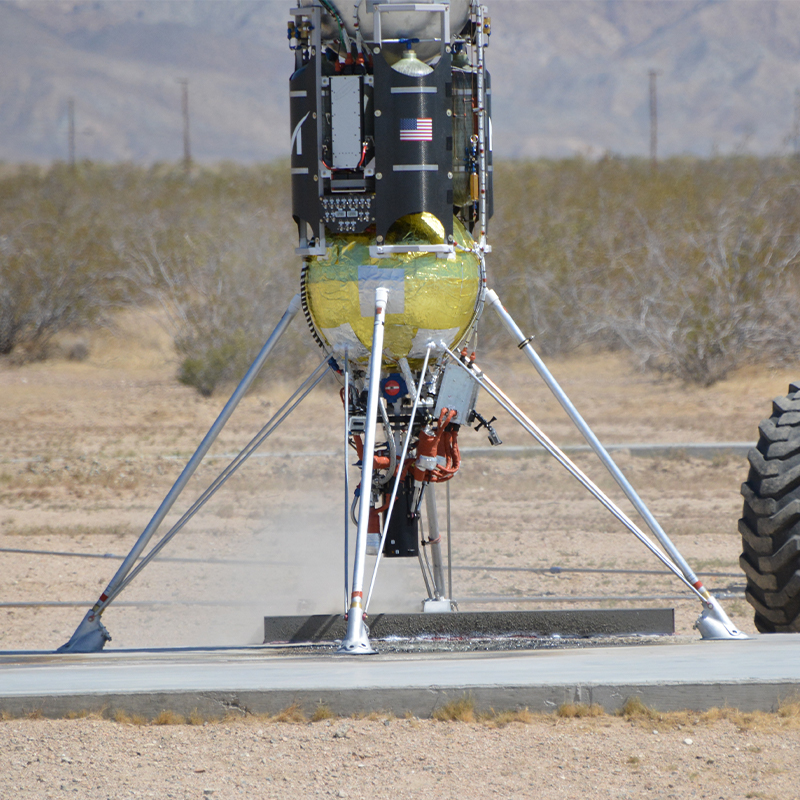
Sample Collection and Transfer
Honeybee Robotics Exploration Systems has enabled the space community to be able to collect a sample and deliver it directly to instruments. Our tools are designed with a task-specific approach, solving the challenge of excavating and transfer soil without placing extensive load on the rest of the spacecraft.
Two of our key technologies in this area are the ISAD scoop from the Phoenix Mars mission and PlanetVac.
The Icy Soil Acquisition Device (ISAD), sometimes called the “Phoenix Scoop,” is both a soil scoop and a precision ice-sampling tool. This end-of-arm scoop for the Phoenix Mars Lander successfully operated on Mars during its mission in 2008, excavating Mars dirt and ice in the polar region to provide insight into the planet’s water cycle. The scoop, mounted on the end of a robotic arm over 2 meters long, provided multiple ways for the surface operation team to excavate hard, compacted icy soil. The Phoenix scoop included a flat scraper blade and a serrated drill rasp. The blade of the scoop first flattened and exposed the icy material, then the serrated rasp scraped the frozen soil. The scoop then captured the fragmented samples to gather enough sample mass for scientific study on the lander platform, using the Thermal and Evolved Gas Analyzer. Honeybee also provided the TEGA Dust Cover for the mission. The Phoenix Mars Lander Scoop successfully excavated hard, compacted Martian soil through multiple operations.
PlanetVac is a pneumatic approach to sample acquisition which can be customized to fit sampling on almost any planetary body, including planets, moons, asteroids, and comets. All that is required is a degree of loose surface material. In an ideal configuration, PlanetVac could be mounted to, or replace, one or more of the foot pads of a lander. Once in contact with the surface, pneumatic nozzles deliver a puff or stream of compressed air, lifting regolith and directing it to an on-board instrument for analysis, or bringing surface-level soil, debris or regolith to a canister for a sample return mission. PlanetVac is a simple, lightweight approach that minimizes moving pieces, reducing the risk of equipment malfunction in dusty areas where traditional lubricants do not function. A typical lander could include several samplers, providing system redundancy and greater reliability.
Sample Manipulation System (SMS) is an example of a component of an instrument Honeybee provided on the Mars Curiosity rover. The SMS solves a core challenge of next-generation planetary exploration: how to analyze samples for water, organics and resources with multiple remote instruments when humans are millions of kilometers away. The SMS is at the heart of the Sample Analysis at Mars (SAM) instrument suite, the core science payload of the $2.5 billion Mars Science Laboratory. SAM uses a suite of three instruments to analyze Mars for organic compounds and to determine the habitability of the planet. To physically bring samples from Mars to the instruments in SAM, Honeybee designed the SMS as a robotic laboratory assistant. Honeybee delivered SMS to NASA Goddard Space Flight Center in 2008, and unit has performed flawlessly since the landing of the Mars Science Laboratory in 2012.




